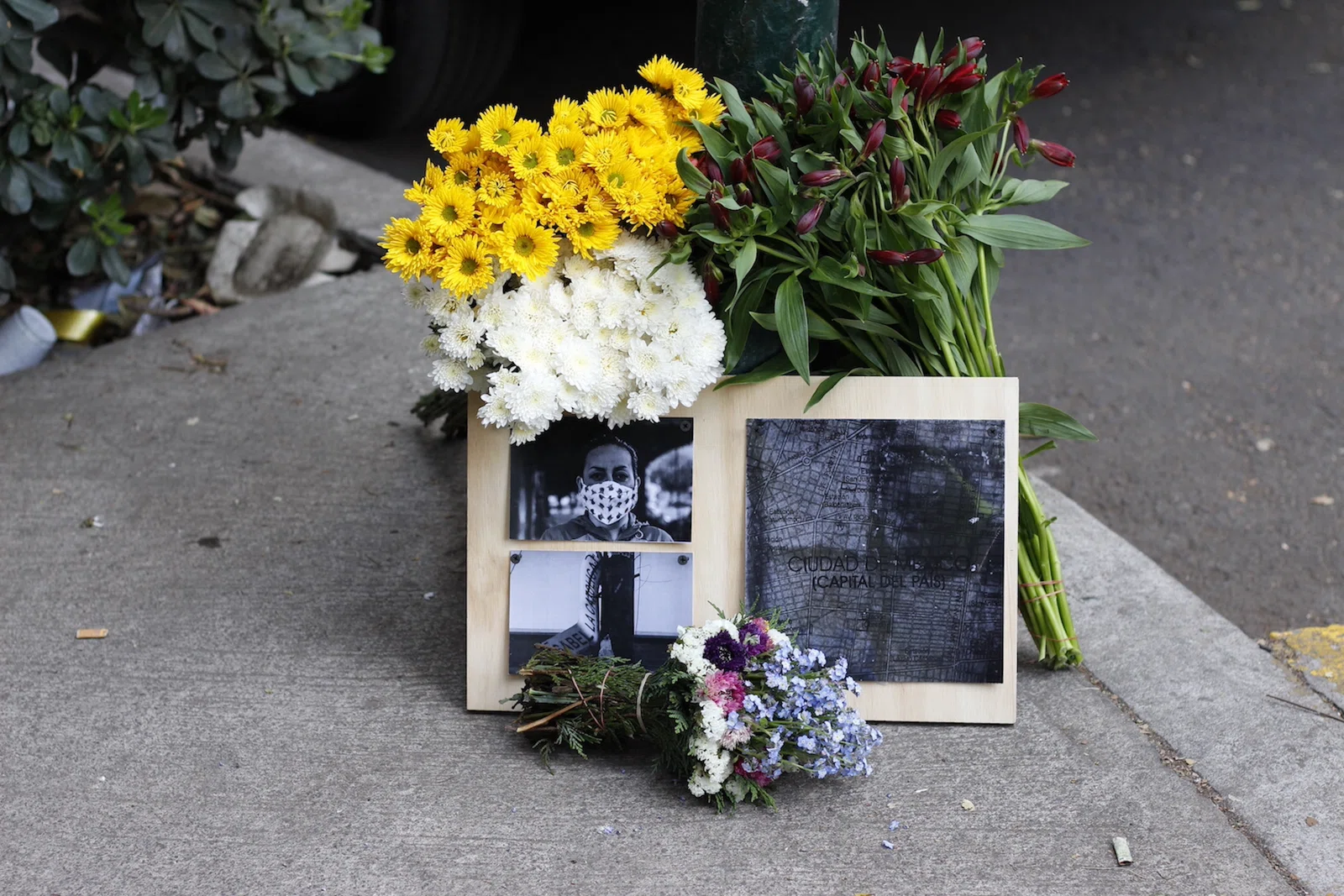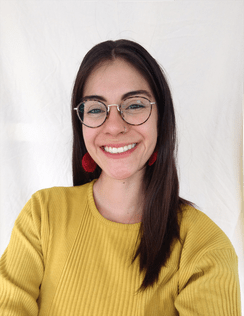







2-D Design
Regina Gomez
American School Foundation|Mexico City, Mexico

Untitled|NA x NA
Material(s): Wood, nails, inkjet photographic paper, map, acetate paper, flowers, portrait on femicide site.
Process(es): Memorial placed in femicide site building on traditional remembrance rituals to contextualize space.
Curatorial Note: These two photos represent an important project focusing on femicide in Mexico.


“I explored women's safety in Mexico. Data shows that 10 women a day are killed in Mexico, creating a femicide crisis. Through the deconstruction of specific places/events involving violent murders and with an intention to bring them to light, I found myself involved in denouncing and obliging institutions/individuals to reflect on the infrastructure of safety surrounding Mexico.”

Student statement
Student
statement
Through my sustained investigation, I explored women's safety in Mexico. According to the Executive Secretary of the National Public Security System of Mexico (SESNSP), 10 women a day are killed every day, consequently evidencing the state of a femicide crisis. Through the deconstruction of specific places and events involving violent murders and with an intention to bring them to light; I found myself involved in denouncing and obliging institutions and individuals to reflect on the safety infrastructures surrounding Mexico. I explored the outcomes of these reactions by the adamant alteration of public space, in which the choice of media was cohesive with traditional practices, as well as contemporary forms of activism and remembrance.
Involving the process of the first selected piece, I found 10 places where femicides occurred around Mexico City, mapped them, and proceeded to photograph these places; including the concrete, the street names, and the women who were passing by the site. Allowing me to reflect on the safety of the space and acknowledge the fact that any woman could have been killed on that site. Afterward, I created wood memorials with these photographs and placed them on the streets where the femicides occurred, exploring geographical aspects via commemoration. I displayed the memorials with flowers and photographed them, building on traditional remembrance rituals to contextualize public space; reflecting on the safety of urban infrastructure and denouncing the horrifying safety situation women in Mexico face.


Regina Gomez
The second selected piece serves as evidence of my exploration of different methods of photographic development. In this case, the manual work behind creating the cyanotype resonated with the powerful image of the rose placed on the streets of Arquímedes and Homero, one of the femicide sites.
Through consistent mapping and visiting 8 out of the 16 boroughs of Mexico City, I incited active action towards addressing the situation as an important crisis. According to the National Institute of Statistics and Geography of Mexico, only 1 out of 10 femicide cases in Mexico is resolved. Periodically, a few femicide cases become viral in the news and social media, prompting their investigation and evidencing the flaws of the actual procedure. However, there are thousands of cases that don't receive media coverage and don't rely on public pressure for their resolution. I chose to focus my sustained investigation on 10 sites that witnessed the murders of women that did not find justice nor get sufficient attention from the public. A reshaping of the safety infrastructures is urgent.
Untitled|8.5 x 11 in.
Material(s): Card stock paper, cyanotype, inverted image on acetate paper.
Process(es): Focus of rose placed in femicide site, printed on cyanotype, exploring methods of commemoration.
Curatorial Note: These two photos represent an important project focusing on femicide in Mexico.
Teacher Statement
Teacher Statement
MelanNie Hurtado

Teaching is an act of attentive collaboration in which I often have the honor to work with, and be inspired by, outstanding young creatives like Regina Gomez. I am proud of her achievements and the recognition of her impactful work showcased in this exhibition. It is not often that I see students address complex issues with the degree of consideration that Regina has achieved. From the very beginning of our inquiry development process, she hoped to raise awareness of the femicide crisis. While Regina’s investigation was rooted in Mexico, it is uplifting to see young people worldwide becoming passionately involved with the feminist movement. A movement that aims, amongst many things, to unveil the systemic oppression enacted on minority groups. Learning to visually express the manifold emotions that these realities bring forth takes nuance. In Regina’s artworks, one can identify a subtle, yet powerful, approach to unmask the feelings of women walking the streets of Mexico. She photographs infrastructure, capturing the physical world built with violence in mind, and passersby at the sites of violence that time has forgotten. By using place as a subject, Regina explores the topic of safety in ways that involve the very people affected by the crisis at hand. Her inquiry’s focus, diligent practice of intervention of space, and openness to the exploration of material are what give this work meaning.
At our school, students are very fortunate to be supported by tremendously talented artists and designers who specialize in their crafts, ranging from fashion design to ceramics and oil painting to multimedia design. Regina specifically received tremendous encouragement, feedback, and support from artist and photography teacher Manolo Hernandez, to whom I am very thankful.

Regina Gomez














